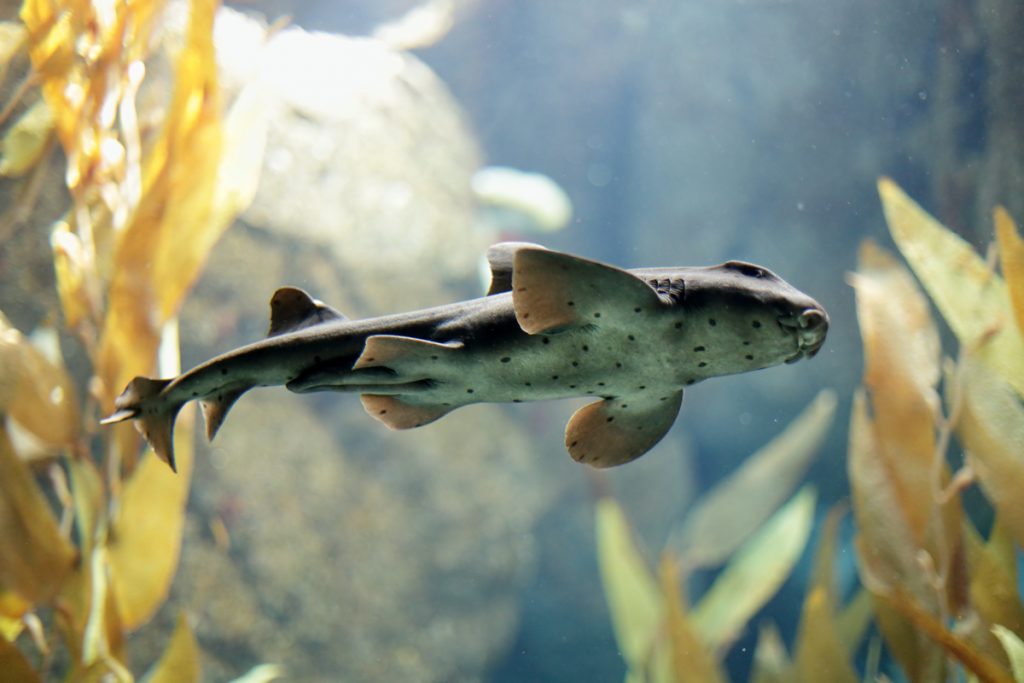It is a clumsy swimmer that prefers to use its flexible, muscular pectoral fins to push itself along the bottom of the ocean rather than swimming through it. The horn shark is usually solitary, though small groups have been recorded (particularly during the mating season).
During the day, horn sharks rest motionless, hidden inside caves or crevices, or within thick mats of algae, though they remain relatively alert and will swim away quickly if disturbed. After dusk, they roam actively above the reef in search of food.

Horn sharks are carnivorous predators and although they do eat fish and marine invertebrates on the ocean floor, around 95% of the horn shark’s diet is made up of hard-shelled molluscs and crustaceans which they horn shark uses its short, hardened head to break them apart before eating the fleshy insides. Horn sharks also feed on echinoderms such as sea urchins and star fish.
They tend to mate in between December and January with the female laying her eggs 4 to 5 months later. Female horn sharks can lay up to 24 eggs over a period of 2 weeks, which float in the ocean in a spiralled casing. The female horn shark is one of the only shark species to display pre-natal care, as she collects her eggs in her mouth before depositing them into the safety of crevices in the rocks. The horn shark pups usually hatch within a month.















